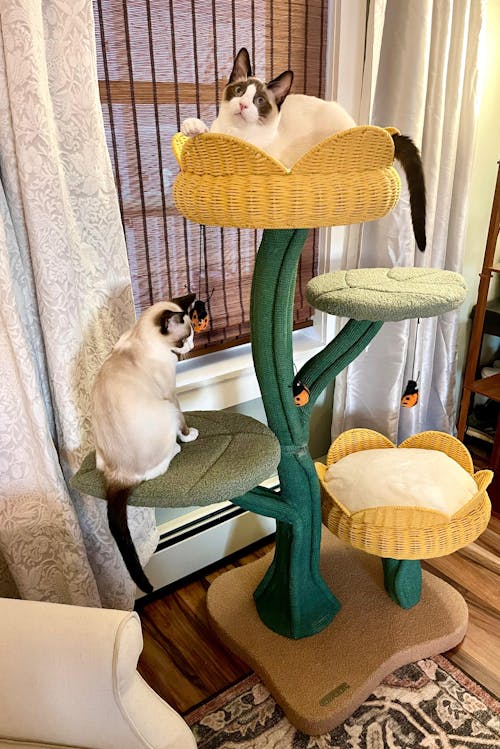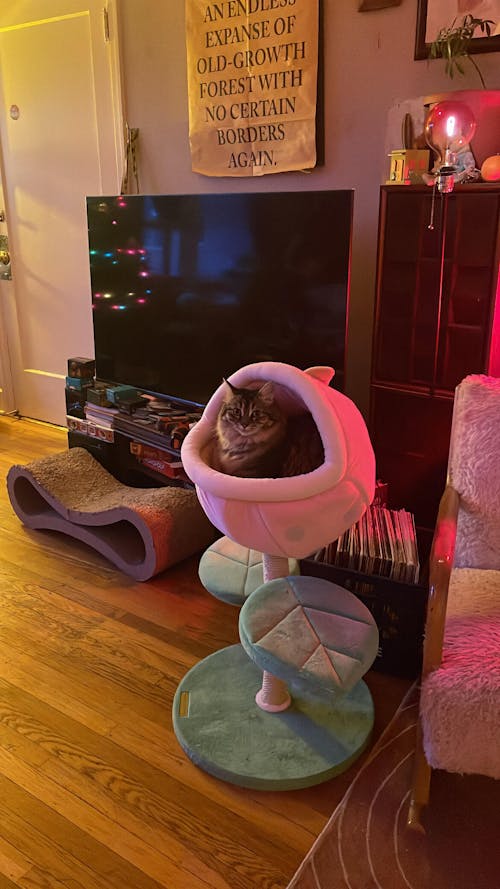 As Seen On
As Seen On

 Our Blog
Our Blog

All you want to know is here
Read more
Is Cat Litter with Coffee Grounds Really Safe? A Comprehensive Look
Has your cat’s litter box started smelling like a coffee shop lately? Well, that coffee ground litter for cats is a new thing that’s been making the rounds as people claim that it’s better for odor control, and helps support eco-friendly policies. But are wonders really true? This blog post will look at the pros and cons of coffee ground cat litter and the effective measures you can take for your cats' well-being when using it.
1. What Is Coffee Ground Cat Litter?
Product Introduction
Coffee grounds cat litter is a biodegradable litter containing used coffee grounds mixed with a base material like tofu. This combination aims to neutralize odor better than traditional litter, and limit waste by reusing the coffee grounds with another life as an effective litter option. There are some brands that include odor-neutralizing natural ingredients, such as yucca extract and baking soda, to give the litter even greater odor-fighting power.
How It Works
So, how does coffee powder work for cat litter?
Physical Adsorption: Because of their porous structure, coffee grounds can remove odors, and the porous structure enables them to trap odor-causing molecules like ammonia.
Chemical Breakdown: Ingredients such as yucca extract assist in the breakdown of some chemicals, such as hydrogen sulfide.
Neutralization: So baking soda or similar compounds can reduce some odors that make using the litter box unpleasant for both you and your cat.
Key Advertised Benefits
The manufacturers emphasize three benefits:
· Fewer Odors: Many owners claim that there is less smell in the vicinity of the litter box because of the coffee used, which is a consequence of the coffee’s granular structure.
· Recycling Benefit: Those wishing to market their products as environmentally friendly appreciate the fact that using coffee grounds reduces the volume of waste sent to landfills.
· Strong Absorption & Clumping: These products absorb liquids very rapidly and form rigid clumps that can be easily removed.
2. Is Coffee Ground Cat Litter Safe for Cats?
Potential Risks of Caffeine
Yes, coffee is dangerous to cats because they cannot metabolize caffeine. Even a tiny dose can lead to poison-like symptoms such as vomiting, agitation, or tachycardia. In rare situations, it could be lethal. This is why, at first glance, the thought of adding used coffee grounds to cat litter raises concern. Coffee ground cat litter manufacturers, however, use a decaffeination process nowadays.
Take, for example, some popular brands that guarantee their clients absolutely caffeine-free coffee grounds. This process is intended to mitigate the possible chances of suffering from caffeine toxicity. While it may not be guaranteed that each product will have the same assurance, many reputable companies do provide some form of certification or lab evidence supporting claims of caffeine-free or very low caffeine levels.
Will Cats Try to Eat It?
Most adult cats tend to show no interest in snacking on their litter. However, kittens and overly curious cats may lick or taste litter if its scent or texture is appealing. Choosing a brand with food-grade, non-toxic ingredients makes occasional licking much safer. With that aside, look for strange behaviors like excessive chewing or swallowing of the litter. If these signs are present, switching back to something more familiar or discussing with your veterinarian is advisable.
Does It Affect Respiratory Health?
Unlike many clay-based litters, high-quality coffee ground litter tends to be low dust. Many consider this to be beneficial for a cat’s respiratory system and anyone suffering from allergies. Some people, particularly pet owners, have strong aversions to overpowering scents. If your cat starts sneezing around the litter box or refuses to go anywhere near it, they are likely reacting to the coffee aroma, not dust particles.
Will Cats Accept Using It?
Felines are creatures of habit, and introducing a new type of litter may sometimes backfire. A few cats might love the scent of coffee, but a number of them will not step into it. Blending the new litter with some of the old one first, and shifting the ratio later is suggested by experts. This allows your cat to acclimate to the new texture and scent, lessening the chances of them avoiding the litter box completely.
3. How Does Coffee Ground Cat Litter Affect Owners and the Environment?
Benefits for Owners
· Better Odor Control: A lot of people say that this odor does not stand a chance against coffee ground litter. It is said to be better than both tofu and clay litter, fighting the ammonia odor as well.
· Less Dust: Reduced dust levels improve the cleanliness of a house, which is beneficial, especially when the owner or the cat has allergies or some sensitivity.
· Ease of Use: Effective clumping mechanisms can make Cleaning the litter box less physically intensive and more straightforward.
Environmental Effect
· Biodegradable: Tofu ingredients and coffee grounds decompose naturally, meaning there will be fewer synthetic materials in landfills.
· Flushable Options: Some manufacturers claim their litter is flushable, but it is advisable to check your plumbing system before trying this.
· Waste Minimization: By reusing coffee grounds, these products help cut down on agricultural waste, appealing to eco-conscious pet owners looking for practical ways to go green.
4. How to Choose and Use Coffee Ground Cat Litter Safely
How to Choose Safe Coffee Ground Litter
· Choose trusted companies: Look for ones that can guarantee their coffee grounds are fully decaffeinated or are at least caffeine-free.
· Look for low dust levels: Look for product litter dust content as part of reviews or product descriptions. Lesser dust is safe for both cats and humans.
· Check all ingredients: Opt for cat litter with no harmful chemicals or strong fragrances.
Helping Your Cat Adapt
· Gradual Litter Changes: Initially, add 20–30% of new coffee ground litter into the cat’s existing litter, and over one or two weeks, increase it to 100% coffee ground litter.
· Avoid Discomfort: React immediately by going back to the older litter if your cat changes to urinating outside the litter box, showing signs of high stress, or sneezing too much.
· Reward Your Cat: Use gentle praise or small treats when your cat uses the new litter. This helps the cat associate using the new litter to faster adjustment.
Usage Tips
· Limit Litter Ingestion: The most cautious approach should be taken with kittens and younger cats who might attempt to eat the litter. While ingestion in small amounts is usually not a concern, consistent consumption can cause serious issues.
· Observe Health Changes: Cease the use of the coffee litter and reach out to a veterinarian if your cat vomits, has diarrhea, or shows any discomfort.
· Maintain Cleanliness: Cleaning the litter box daily by scooping and completely replacing it as necessary to prevent bacterial growth.
5. Conclusion: Is Coffee Ground Cat Litter Worth Using?
As far as odor control goes, and for cats that get bothered by the scent of strong perfumes paired with dust-free litter, this is best suited for multi-cat households or places that are overly sensitive to smells. It is also an eco-friendly solution. However, the risk of leftover caffeine isn’t decaffeinated, and other cats may have a problem with the smell or prefer to nibble the litter. This litter serves those who wish to adopt a more eco-friendly lifestyle with dependable odor control. Here is a summary of what should be done:
Suggested Steps
· Go by a trustworthy supplier who guarantees the decaffeination is done properly.
· Monitor your cat's reaction during the shift by mixing it with your old litter.
· If you witness any unusual behavior, consult a medical professional.

Where Should You Place the Litter Box? 5 Key Factors That Affect Your Cat’s Bathroom Habits
Most cat owners are aware of the annoyance brought about by a cat not using a litter box correctly or deciding to use another location within the house instead. But what leads to such behaviors? Yes, how you clean the litter and the type of litter used matters. People tend to overlook the actual position of the litter box within the house. In actual truth, placing the litter box in the right area can make all the difference in providing a stress-free bathroom experience for your cat and dealing with a messy situation.
We will provide you with five different factors that influence your cat’s bathroom tendencies while explaining why the position of the litter box is crucial. Additionally, we’ll discuss how best to test various placements and special circumstances and hone in on your cat’s ideal resting place.
Why Is Litter Box Placement Important?
Affects Your Cat’s Comfort
Cats are very cautious animals; they must feel safe when doing business. Think about how you would feel if your bathroom door opened to a busy corridor; you would most likely want more privacy. Litter boxes at appropriate locations also help calm cats and increase their chances of using them regularly.
Reduces the Risk of Accidents
In some instances, cats may actively choose to skip the box, not out of mischief but due to stress eliciting a change in the environment in which the box is located. Scenarios like a cubical, overwhelming foot-trafficked space, or a position right next to loud appliances could create avoidance behavior from the box. This results in ‘accidents’ being ‘mistakenly’ dropped off in obscure locations around the home, which no one wants.
Controls Odors and Maintains Home Hygiene
Placement also has practical implications for odor control. Litter boxes in poorly ventilated rooms can block odor from escaping. On the other hand, rooms with adequate ventilation help reduce unpleasant smells, which improves the home's environment further. Fewer messes also reduce the risk of lingering scents that could bother you and your cat.
Key Factors That Affect Your Cat’s Bathroom Habits
Privacy: Cats Prefer a Quiet, Undisturbed Area
Privacy matters to cats when it comes to using the litter box. If a cat uses the litter box in a busy hallway or next to a washing machine, they will likely feel agitated. Cats prefer low-traffic areas, like a room corner, behind furniture, or near privacy screens. Moreover, some sheltered places, hidden at the house's sides or at the bottom of the stairs, also work. Avoid placing the box too close to doors that swing open or other loud gadgets such as TVs or dishwashers.
Locations to Avoid:
· Busy hallways or entryways
· Near doors that slam frequently
· Next to loud appliances (e.g., washing machines or dryers)
Why It Matters:When pets know they will not be disturbed, they tend to use the box more often than when they feel threatened and exposed. In such cases, your pet cat may start looking for a discreet area, such as your bedroom carpet, to eliminate its waste.
Accessibility: The Litter Box Should Be Easy to Reach but Away from Food & Water
People often make the oversight of choosing a litter box location that seems private and quiet but is easy for the cat to reach. The litter box may be behind furniture or on another level entirely. Also, cats do not generally want to do business near their food or water bowls, so the litter box should be at least five to six feet away.
With larger houses, consider placing more than one box so the cat does not have to travel around the house whenever it needs to relieve itself. This also applies to people who own multiple cats. Each cat should have one box plus an additional one to circumvent territorial disputes or fights over resources.
Odor Management: A Well-Ventilated Area Is Best
Everyone desires a home whose smell isn’t reminiscent of a litter box. An area with moderate airflow can help create a more cat-friendly environment without unsightly odors forming. Airflow is almost nonexistent in enclosed places such as cabinets, which breeds odor. Tight places may become overwhelmingly smelly, causing your cat to reject using the box altogether.
Adding a fan to a small room directly helps get airflow going. Leaving a door slightly ajar works as well. Some cat owners make desperate odor-neutralizing attempts, but it is better to avoid perfumes because elder cats may avoid entering nose-punishing places.
Stability: Cats Need a Stress-Free Litter Box Environment
Cats can get easily startled by sudden noises or vibrations, making it likely that they'll avoid going near the litter box. Consider putting the box away from where children run around, where dogs are kept busy, or even near a vacuum. If your washing machine tends to jiggle very strongly during the spin cycle, don't put the litter box on the other side of the wall. The same goes for places where the cat gets disturbed by other animals sneaking up on them.
Cats are likely to find calm and stable places soothing to their well-being. This, in turn, will make them more likely to continue using a litter box as long as these conditions are met.
Convenience for Cleaning: The Litter Box Should Be Easy to Maintain
Like all things in life, all considerations should also focus on you. With their preferred sense of tidiness, cats expect the litter box to be free of waste as long as it’s clean and easy to navigate. If the box is kept in an unreachable place, like a cramped loft, waste accumulation is bound to happen, and that could be quite a hassle.
Placing it beside a rubbish bin, a drain, or any location with tiles makes cleaning much easier. If you scoop the litter daily, your cat will benefit as well. They will enjoy using a box that is kept clean and smells good.
How to Find the Best Litter Box Location for Your Cat
1. Test Different LocationsPick several litter boxes and try them out in different places around the house. Note which box your pet uses the most. That likely indicates they feel the most safe and comfortable there.
2. Observe Your Cat’s BehaviorLook for signs of using the box less frequently than normal, unusual elimination patterns, and neglecting the box. Is the cat hovering around the box but not actively entering it? Do they seem to run away as soon as a nearby loud appliance is switched on? Please use these explanations to explain your reasoning.
3. Adjust and OptimizeAfter identifying a strong preference, adjust the other boxes to more favorable locations or slowly remove them. Cats enjoy and respond well to consistency, so settle on a good spot if found. Changing spots suddenly can confuse them.
Special Considerations for Different Situations
Multi-Cat Households
The general rule for households with numerous cats is to provide at least one litter box per cat and add one extra box. This consideration mitigates scrambles and territorial fights when a guard cat stands sentry over a single box. Also, positioning the boxes throughout the home minimizes the chances that a shy cat will get trapped in a corner dominated by a more assertive kitty.
Senior or Disabled Cats
Because of age or disability, older cats may have difficulty managing stairs, high sides, and boxes placed in corners. Because of these conditions, placing the box at an accessible, single level helps prevent untidiness. Also, consider using a box that features a low entry so that cats won’t have to climb or jump over doors—especially important for cats with arthritis.
New Environment Adaptation
Relocating or redecorating? Remember that cats do not appreciate change. If you need to move the litter box, do it stepwise. Move it a few inches every day. Change position gradually and watch for signs of their behavior. Doing this, too, suddenly leads to confusion and eliminates problems.
Conclusion & Actionable Tips
As a cat owner, it is essential to understand that a cat’s bathroom habits are influenced by more than just the type of litter used. The placement of the litter box can determine if the cat will faithfully use it or choose to go 'hunting' for a more suitable restroom. A cat's litter box needs to be kept in a quiet place with good ventilation and easy access whilst far from food and water bowls. Dual-cat households should ensure at least one box per cat to enhance comfort.
Actionable Tips
1. Start with a Quiet Corner: Try to find cat equipment, such as the litter box, in a quiet place far from the center of heavy noise and/or foot traffic.
2. Keep It Accessible: Exercise care when placing the litter box so it is not behind objects or furniture that are hard to move around.
3. Separate It from Food: Food bowls must always be placed away from the litter box as pets do not like eating next to their toilet area.
4. Observe and Adjust: React to your cat's signals. If she stops using the box entirely, consider changing the location.
5. Think Long-Term: Multi-cat homes and kittens have distinct requirements and should be planned.
While placing the litter box may seem trivial, it can help with common problems cat owners have to deal with, such as litter box problems, odor, and distressed felines. Adhering to these instructions will allow you to balance your cat’s comfort with the cleanliness of your home.
Why Do Cats Knead? The Endearing Secret Behind This Feline Ritual
Introduction
If you’re a cat parent, chances are you’ve witnessed your kitty rhythmically pressing its paws into a soft blanket, a pillow, or even your lap—purring away, eyes half-closed, looking completely blissed out. This charming (and sometimes amusing) behavior is known as kneading, or as some cat lovers like to call it, "making biscuits." While it might seem random or playful, kneading is actually rooted in deep-seated feline instincts and emotions. Let’s dive into why cats knead and what this adorable habit really means.
1. The Origins of Kneading: A Comfort from KittenhoodKneading begins at birth. Kittens instinctively knead their mother’s belly while nursing, which stimulates milk flow and strengthens their bond with their mother. It’s a comforting, essential behavior that ensures their survival.
But even as they grow into adults, many cats continue to knead, especially when they encounter soft, cozy surfaces. Animal behaviorists believe this action helps cats re-experience the security and warmth they felt as kittens. In other words, your cat might be kneading that fleece blanket or your lap to recapture the emotional comfort of being with its mother.
2. More Than Instinct: What Kneading Really CommunicatesKneading isn’t just a leftover reflex—it’s also your cat’s way of expressing itself. Here’s what your feline might be saying through this behavior:
“I’m Happy and Relaxed”: Cats often knead when they’re completely at ease. If your kitty is kneading while purring, stretching, or dozing, it’s a strong sign that they feel content and safe in their environment.
“You’re Mine”: Cats are territorial creatures. Their paw pads contain scent glands, so when they knead, they’re subtly marking you or their favorite blanket as “theirs.” Consider it a gentle, invisible signature.
Self-Soothing: Some cats knead when they’re feeling anxious or stressed. Much like how humans might tap their fingers or hug a pillow when uneasy, kneading helps cats calm themselves.
3. Why Some Cats Knead More Than Others
While many cats knead regularly, others do it sparingly—or not at all. Here are a few reasons why kneading behavior can vary from cat to cat:
Early Weaning: Cats that were separated from their mother too soon often display more kneading. It’s thought to be a way of compensating for that missing early-life comfort.
Affectionate Personality: Well-socialized, people-oriented cats tend to knead more openly. If your cat is trusting and enjoys physical closeness, it’s likely to knead you as a sign of affection.
Breed Tendencies: Some cat breeds, such as Ragdolls or Maine Coons, are naturally more affectionate and might knead more often than more independent breeds. While not scientifically confirmed, this is something many cat owners report anecdotally.
4. What Should You Do When Your Cat Kneads?
Kneading is a healthy and normal feline behavior—but sometimes it comes with sharp claws! Here’s how to manage it while keeping both you and your cat happy:
Create a Kneading Zone: Place a soft, durable blanket or pet mat in your cat’s favorite lounging spot. This gives your cat a designated space to knead without damaging furniture or clothing.
Keep Nails Trimmed: Regular nail trims will help reduce accidental scratches, whether your cat is kneading your lap or a favorite cushion.
Monitor for Changes: If your cat suddenly kneads more than usual or seems agitated while doing it, this could be a sign of stress or an underlying health issue. Keep an eye on their overall behavior and consult your vet if needed.
✨ Bonus Tip: If your cat chooses your lap for a kneading session, take it as a high compliment—it’s one of the clearest signs your cat feels secure and bonded to you.
5. Wild Roots: Kneading in Big Cats
Kneading isn’t exclusive to house cats. Wildlife researchers have observed lions, leopards, and other big cats performing similar rhythmic paw-pressing motions while resting. This suggests kneading is an ancestral behavior rooted in the feline family tree.
Even more heartwarming, orphaned tiger cubs raised by humans have been known to knead their human caretakers’ arms, just like a kitten would knead its mother. Whether in a living room or out in the wild, kneading is a universal feline way to seek comfort.
Conclusion
Kneading is far more than a quirky cat habit. It’s a blend of instinct, emotion, and even a little bit of territory marking. So next time your furry friend starts making biscuits on your lap, know that it’s sharing a moment of trust and love with you. After all, earning the role of your cat’s “honorary mom” is one of the sweetest perks of being a cat parent.

Is Cat Litter with Coffee Grounds Really Safe? A Comprehensive Look
Has your cat’s litter box started smelling like a coffee shop lately? Well, that coffee ground litter for cats is a new thing that’s been making the rounds as people claim that it’s better for odor control, and helps support eco-friendly policies. But are wonders really true? This blog post will look at the pros and cons of coffee ground cat litter and the effective measures you can take for your cats' well-being when using it.
1. What Is Coffee Ground Cat Litter?
Product Introduction
Coffee grounds cat litter is a biodegradable litter containing used coffee grounds mixed with a base material like tofu. This combination aims to neutralize odor better than traditional litter, and limit waste by reusing the coffee grounds with another life as an effective litter option. There are some brands that include odor-neutralizing natural ingredients, such as yucca extract and baking soda, to give the litter even greater odor-fighting power.
How It Works
So, how does coffee powder work for cat litter?
Physical Adsorption: Because of their porous structure, coffee grounds can remove odors, and the porous structure enables them to trap odor-causing molecules like ammonia.
Chemical Breakdown: Ingredients such as yucca extract assist in the breakdown of some chemicals, such as hydrogen sulfide.
Neutralization: So baking soda or similar compounds can reduce some odors that make using the litter box unpleasant for both you and your cat.
Key Advertised Benefits
The manufacturers emphasize three benefits:
· Fewer Odors: Many owners claim that there is less smell in the vicinity of the litter box because of the coffee used, which is a consequence of the coffee’s granular structure.
· Recycling Benefit: Those wishing to market their products as environmentally friendly appreciate the fact that using coffee grounds reduces the volume of waste sent to landfills.
· Strong Absorption & Clumping: These products absorb liquids very rapidly and form rigid clumps that can be easily removed.
2. Is Coffee Ground Cat Litter Safe for Cats?
Potential Risks of Caffeine
Yes, coffee is dangerous to cats because they cannot metabolize caffeine. Even a tiny dose can lead to poison-like symptoms such as vomiting, agitation, or tachycardia. In rare situations, it could be lethal. This is why, at first glance, the thought of adding used coffee grounds to cat litter raises concern. Coffee ground cat litter manufacturers, however, use a decaffeination process nowadays.
Take, for example, some popular brands that guarantee their clients absolutely caffeine-free coffee grounds. This process is intended to mitigate the possible chances of suffering from caffeine toxicity. While it may not be guaranteed that each product will have the same assurance, many reputable companies do provide some form of certification or lab evidence supporting claims of caffeine-free or very low caffeine levels.
Will Cats Try to Eat It?
Most adult cats tend to show no interest in snacking on their litter. However, kittens and overly curious cats may lick or taste litter if its scent or texture is appealing. Choosing a brand with food-grade, non-toxic ingredients makes occasional licking much safer. With that aside, look for strange behaviors like excessive chewing or swallowing of the litter. If these signs are present, switching back to something more familiar or discussing with your veterinarian is advisable.
Does It Affect Respiratory Health?
Unlike many clay-based litters, high-quality coffee ground litter tends to be low dust. Many consider this to be beneficial for a cat’s respiratory system and anyone suffering from allergies. Some people, particularly pet owners, have strong aversions to overpowering scents. If your cat starts sneezing around the litter box or refuses to go anywhere near it, they are likely reacting to the coffee aroma, not dust particles.
Will Cats Accept Using It?
Felines are creatures of habit, and introducing a new type of litter may sometimes backfire. A few cats might love the scent of coffee, but a number of them will not step into it. Blending the new litter with some of the old one first, and shifting the ratio later is suggested by experts. This allows your cat to acclimate to the new texture and scent, lessening the chances of them avoiding the litter box completely.
3. How Does Coffee Ground Cat Litter Affect Owners and the Environment?
Benefits for Owners
· Better Odor Control: A lot of people say that this odor does not stand a chance against coffee ground litter. It is said to be better than both tofu and clay litter, fighting the ammonia odor as well.
· Less Dust: Reduced dust levels improve the cleanliness of a house, which is beneficial, especially when the owner or the cat has allergies or some sensitivity.
· Ease of Use: Effective clumping mechanisms can make Cleaning the litter box less physically intensive and more straightforward.
Environmental Effect
· Biodegradable: Tofu ingredients and coffee grounds decompose naturally, meaning there will be fewer synthetic materials in landfills.
· Flushable Options: Some manufacturers claim their litter is flushable, but it is advisable to check your plumbing system before trying this.
· Waste Minimization: By reusing coffee grounds, these products help cut down on agricultural waste, appealing to eco-conscious pet owners looking for practical ways to go green.
4. How to Choose and Use Coffee Ground Cat Litter Safely
How to Choose Safe Coffee Ground Litter
· Choose trusted companies: Look for ones that can guarantee their coffee grounds are fully decaffeinated or are at least caffeine-free.
· Look for low dust levels: Look for product litter dust content as part of reviews or product descriptions. Lesser dust is safe for both cats and humans.
· Check all ingredients: Opt for cat litter with no harmful chemicals or strong fragrances.
Helping Your Cat Adapt
· Gradual Litter Changes: Initially, add 20–30% of new coffee ground litter into the cat’s existing litter, and over one or two weeks, increase it to 100% coffee ground litter.
· Avoid Discomfort: React immediately by going back to the older litter if your cat changes to urinating outside the litter box, showing signs of high stress, or sneezing too much.
· Reward Your Cat: Use gentle praise or small treats when your cat uses the new litter. This helps the cat associate using the new litter to faster adjustment.
Usage Tips
· Limit Litter Ingestion: The most cautious approach should be taken with kittens and younger cats who might attempt to eat the litter. While ingestion in small amounts is usually not a concern, consistent consumption can cause serious issues.
· Observe Health Changes: Cease the use of the coffee litter and reach out to a veterinarian if your cat vomits, has diarrhea, or shows any discomfort.
· Maintain Cleanliness: Cleaning the litter box daily by scooping and completely replacing it as necessary to prevent bacterial growth.
5. Conclusion: Is Coffee Ground Cat Litter Worth Using?
As far as odor control goes, and for cats that get bothered by the scent of strong perfumes paired with dust-free litter, this is best suited for multi-cat households or places that are overly sensitive to smells. It is also an eco-friendly solution. However, the risk of leftover caffeine isn’t decaffeinated, and other cats may have a problem with the smell or prefer to nibble the litter. This litter serves those who wish to adopt a more eco-friendly lifestyle with dependable odor control. Here is a summary of what should be done:
Suggested Steps
· Go by a trustworthy supplier who guarantees the decaffeination is done properly.
· Monitor your cat's reaction during the shift by mixing it with your old litter.
· If you witness any unusual behavior, consult a medical professional.



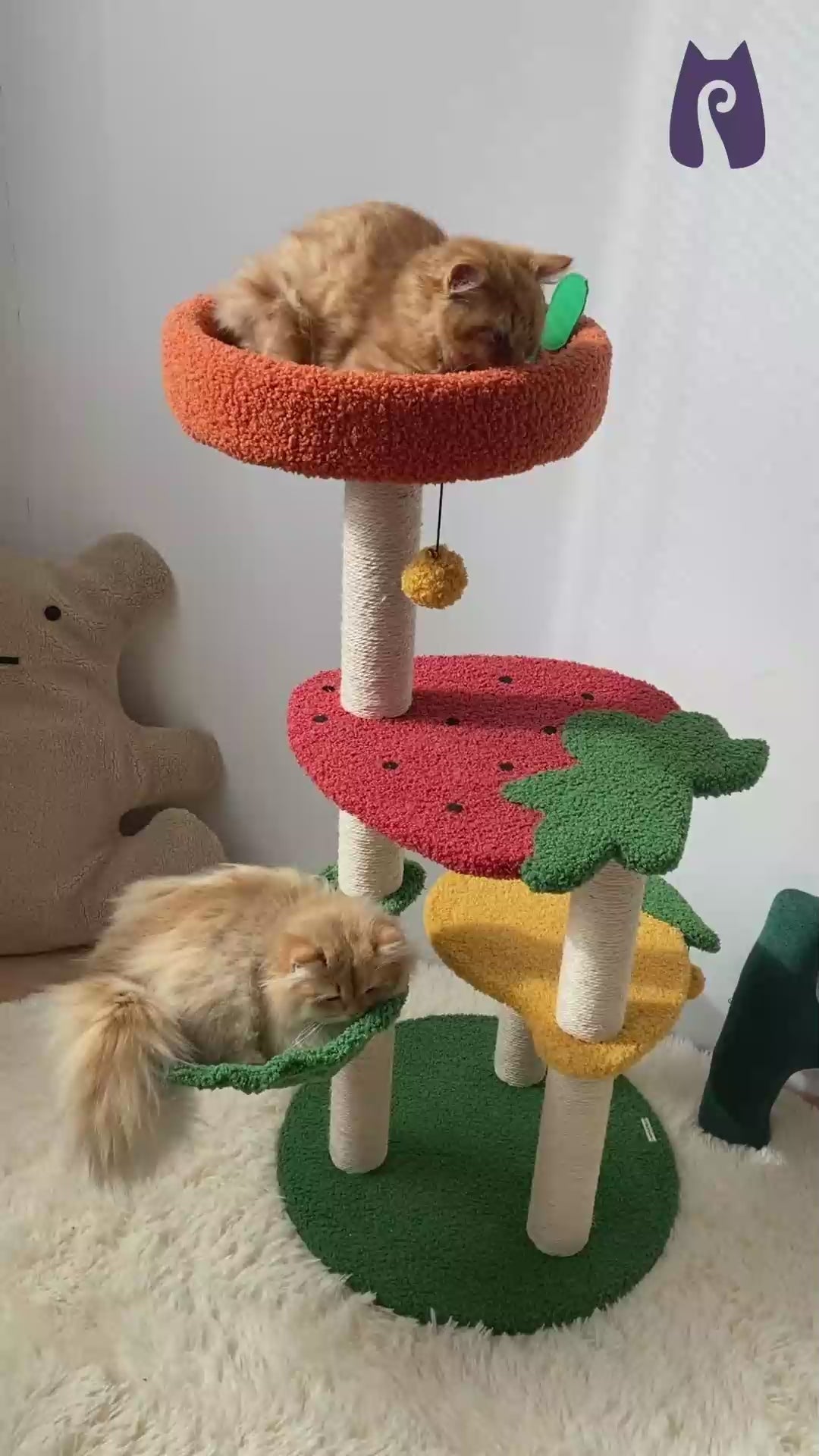





























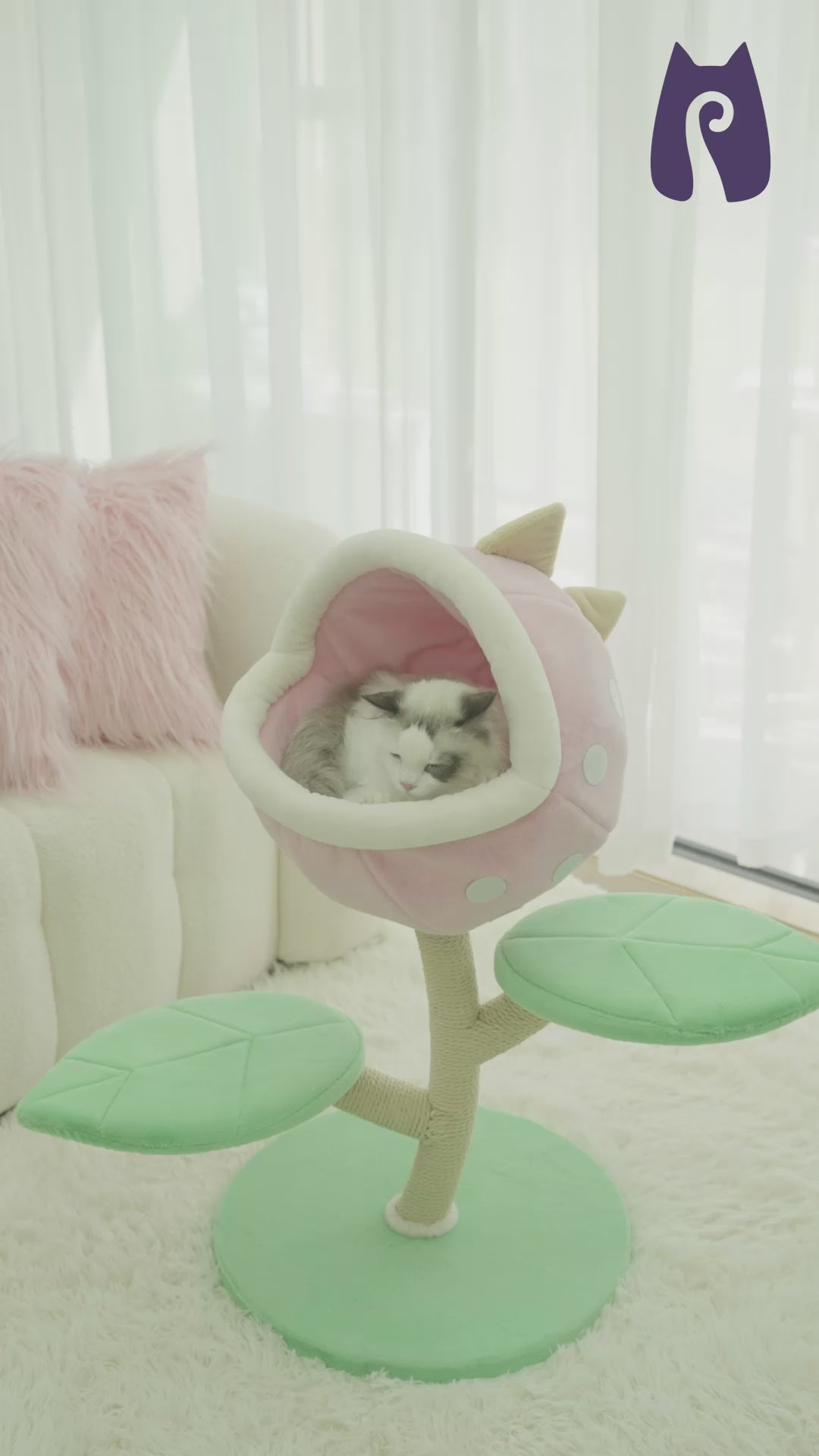

































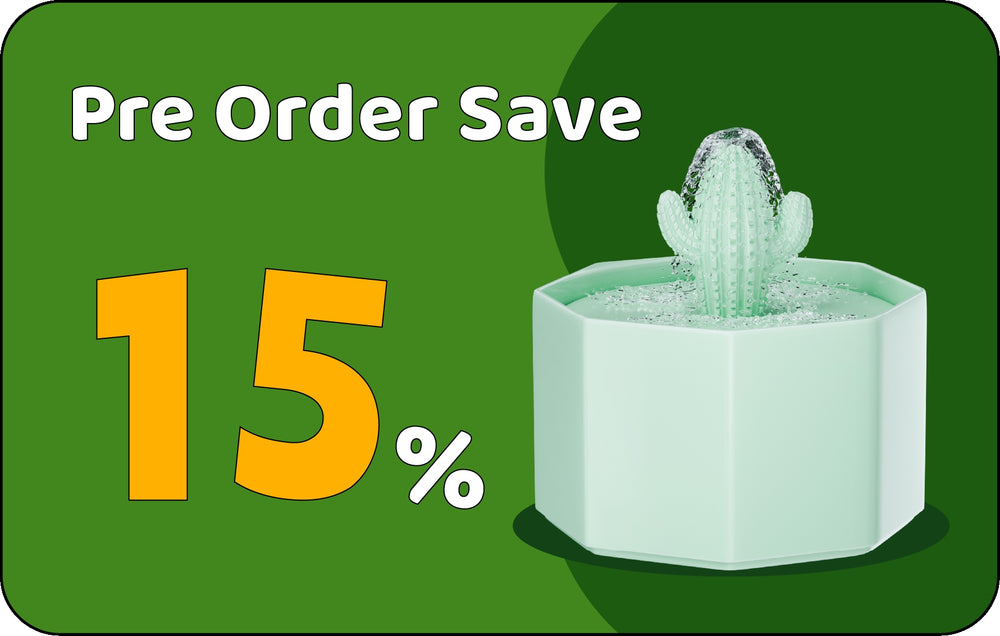

















 SHARE
SHARE TWEET
TWEET PIN
PIN